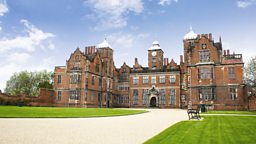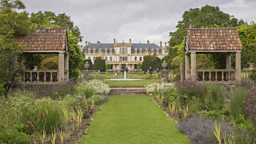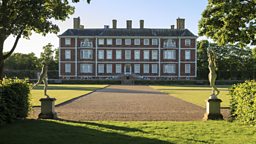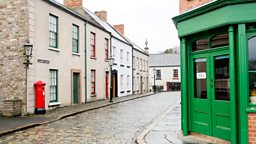Ever curious I recently came across a violin with a lable.
Peering inside the case through the distinctive holes, the dealer said “Stradivarius, believe that if you want”.
It made me wonder.....What turns a musical instrument, into an myth?
I purchased it knowing that there were probabaly thousands of imposters and the labelled Stradavarius had become a by word in the antique trade, saying to all
“Believe what you want, buyer beware”.
I took it home and hung it on a piece of string off the picture rail and there it stayed.
A twenty quid talking point.
Then ever more recently I was told that a friend of a friend actually owned a Stradivarius violin.
A genuine one.
With a provenance as long as your bow arm.
Ummm. Thats interesting I thought.
I had the time and was given the opportunity to sift through the life of a great musician. Who had owned it.
It seemed a great honour to me.
The momentos of the vast travelling, that has to be done in pursuit of an International Concert career. It was all there for me to look at.
I felt honoured to peer through the window of time.
I have not seen the actual Stradivarius, but I have seen detailed photographs, heard and read all about it.
Its concise history is known. It's in all the books. Very expensive books.
Speaking to members of the family I have peered into the life of the violinist who it was gifted to, by her rich father. Fascinating.
But always cynical I remember watching one of the later Lovejoy episodes, when the programme had lost its zeal, and become a Keystone Cop's parady.
This episode involved one of the actors from The Boys From The Blackstuff who was playing the part of a violin master repairer. He was being asked to fake a Stradivarius by the loveable rogue in order to pretend it was not real.
Though it was a comedy it brought out some real dilemmas and asked questions about authenticity that are lessons in life.
“Why would you wanna ruin a thing of beauty” Yozzers mate says being asked to turn A Stradavarius into an 'ordinary' violin.
Far fetched you may think?
Well not by the history of violins that I have read about.
They appear to, not just be musical instruments but blue chip commodities.
That are traded by kings and queens and held by rich institutions.
My Clarinet is made of Grenadilla not as is often thought, ebony.
I often see them being sold.
Some that were owned by famous people.
Of course the pads are usually well and truly dried.
I look at them but they are old and worn. It will let me down. I know it.
I leave them behind they are not too valuable.
I have an antique metal clarinet....can't get a tune out of it. It squeaks in the box.
But what if it was, the clarinet, that Artie Shaw showed direct to the camera in a BBC4 documentary. Where he spoke about his life and how he became the sound of America. Around the time of the bombing of Pearl Harbour.
Where he says that he recorded a little known George Gershwin tune called 'Begin the Beguine' and “It took off like a singed cat”.
Then it becomes a piece of history. It's culture.
What is that magic that makes, a label inside a violin, with the name of Stradivarius worth millions?
It was previously thought that decades went by drying the wood used to make instruments.
But dendrochronologists have scientificaly dated the woods used in the making of his instruments to have only been felled a few years before the instrument was sold.
Quite often, when dated, the latest ring would be 1702 and the label on a violin would be 1706.
There are too many of these, short dates between felling and sale to be a co-incidence. Attribution to a maker by the exact tree used is now able.
Stradivarius built over a thousand instruments and about five to six hundred of these instruments are left. Of these 350 are violins.
He didn't buy wood in wedges like most, he bought entire trees or large portions of the same tree.
So we can be confident with the technology to hand that we can identify the very timber used.
There are fortunes to be won and lost on mis-attribution of one of his instruments.
His output was huge and the system of taking the timber from tree to sale must have been a akin to military planning.
He needed to use the timber that had cost him dear, and this he did to perfection.
So what was so magical about his chosen wood that made them sing in such a way that his legacy, we still talk about today with the utmost reverence?
Why do we call anyone a genius?
What is it about the name Stradivarius that has been passed down the centuries that has turned his name into investment gold?
And still play nicely too.
The attributes to make a violin are unique. You have to become an alchemist and dance between the practical skills needed to engineer any number of pieces of chosen wood and having picked them, take those different woods, and with those skills join them seemlessly into a work of art.
And be confident that the beautiful work of art will be of use to a skilled player with an ear that is tuned to hear the minute semi-tones of any string chosen or plucked. And make a violin or a cello sing sweetly and to to be applauded by any number of audiences, also with ears that quiver to a bending sound.
Musically educated ears to be matched with auditorium acoustics. That are traditionally constructed of wood. It's not easy. Wood is warm.
Science and magic is in the soul of the luthier. Who turns his spruce and maple to golden sound. Trees that in life are silent yet in death they sing.
What is it that allows the confidence of the player to match his hands and bow and become one, in tune?
The thickness of the wood and how the holes are drilled in the plank to set the varing depths of the curviture to be the gouged out.
The understanding of the exact level to be removed from that wood, done by a gauge but mostly by feel are not a given right. They have to be earned.
Spruce is an evergreen, it is not a dense hardwood.
Spruce does not have a cellular structure of a dense timber. The grain is straight hollow. With tiny tubes bound together like minature drinking straws, this carries the sound.
So when you curve but retain the flatness it conducts the sound. Yet is strong. The plate conducts vertically. It has a high density for a given wieght.
Balsa wood is the optimum material for violins but it is not strong enough. It could be strengthened with plastic, but why would you do this?
Wood is the correct material for the job no matter how much science is applied to it.
The balance of a violin being set with another wood, a harder wood.
Maple is the usual hardwood support and has a diffuse grain. Birds eye maple could be used occasionaly for the back, but more than often, it was plain maple.
This spreads the sound horizontaly.
The woods, sometimes chosen by foresters ear, that could be augmented into those magic tones was not a given right.
Knowledge has to be earned and passed down through families and generations. Just like those trees, it grows slowly but surely.
Altitude 1200 meter high some say makes it free of knots and the terra ferme and the flora around the tree is also crucial. Its like choosing where to plant grapes.
These are slow growing and not forced like the pines we grow for carcassing.
You have to understand just how it bends and how the climate helps it grow, to watch it grow. Then all of a sudden a tree is cut and ready to be handed to the lutherers aim.
What is the right time to fell a tree?
Maple grows best in southern Europe.
There are different visual aspects too to be taken into account.
If you dry it too quick it will split so it needs to be watered for a year, outside, and this watering cleanses the inside of the grain.
The ripples form and come out in pattern and depth in these verticaly cut timbers. Experience would be all in the choosing of grain.
The flame or the ripple if deep and goes well into the wood becomes a back plate.
Necks can also be chosen and the tree in death gets a second life.
The life of the tree goes on indefinitly in its sacrifice to become a instrument.
And the wood we are working with today were saplings when stradivarius was making his.
But will the instruments of today be as good in 300 years as a Stradivarius is today.
The loving care that is needed through all stages is what makes a good violin.
The curve or arched shape of a violin carries the load and combining this with its pleasing shape that helps to stop warping. Sharp course corners would acentuate or, help a split. Wood is a material that is subject to changes in temperature and forces that if unchecked or not counter balanced would ruin an instrument.
So the shape and form of Stradivarius design was quite revolutionary around the time of 1700.
Stradavarius changed the way Cremona heard the instrument. A town of trained ears.
This will have been by trial and error. In this town that understood.
We can see his original moulds that are preserved in Cremona today.

































